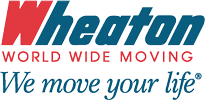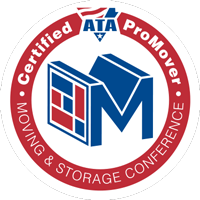How to Use Storage in the Upper Peninsula
Space never seems to be enough—whether for personal belongings piling up at home or business inventory stretching beyond its limits. Storage solutions bridge that gap, offering flexibility for homeowners, collectors, seasonal residents, and companies alike. In Michigan’s Upper Peninsula, warehouse and mini self-storage facilities serve a range of needs with options tailored for both individuals and businesses. Whether it’s securing household items, managing equipment, or optimizing retail stock, the right storage choice simplifies your life and frees up valuable space.Moving for the First Time?
Understanding the Basics of Warehousing and Mini Storage Facilities
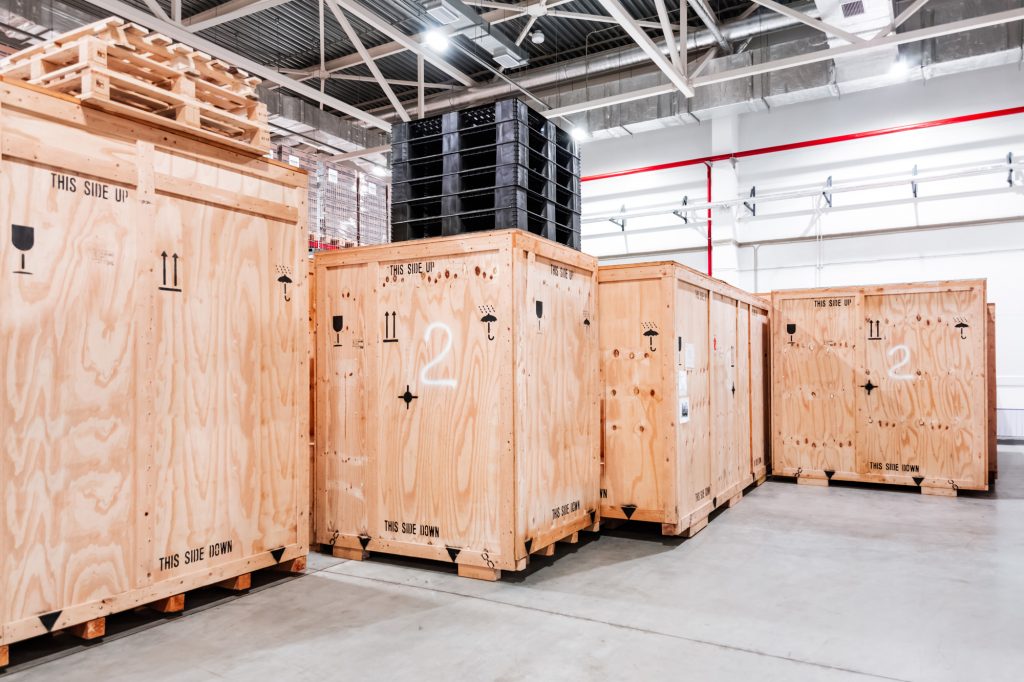
Defining Warehouse and Mini Storage Facilities
Storage needs vary widely, and facilities provide solutions tailored to different requirements. SpareFoot defines warehouse storage as “a large-scale storage solution typically housed in an expansive, often customizable, area.” A warehouse storage facility handles large-scale inventory, equipment, and bulk goods, often catering to businesses that require organized logistics and distribution. These spaces typically feature high ceilings, loading docks, and climate control for sensitive stock.
In contrast, mini self-storage serves individuals or small businesses needing extra space for personal belongings, document archiving, or seasonal equipment. These units come in various sizes, offering flexibility for users looking to free up space without committing to a large-scale solution.
Key Differences Between Warehouse Storage and Mini Self-Storage
- Size and Scale: Warehouses accommodate shipments, pallets, and bulk inventory, while mini self-storage units are better for smaller, individual storage needs.
- Access and Usage: Businesses use warehouses for inventory management and order fulfillment, often requiring professional logistics support. Mini storage units allow direct, personal access for individuals or small businesses.
- Lease Terms: Warehousing often involves long-term contracts with structured operational agreements. Mini self-storage provides short-term rental flexibility, sometimes even with month-to-month options.
- Security Levels: Both storage types offer security, but warehouses may include advanced surveillance, controlled entry systems, and restricted personnel access.
- Climate Control and Special Features: Some facilities provide temperature control, but warehouses often feature specialized conditions for pharmaceuticals, food storage, or fragile electronics.
Whether opting for warehouse storage or mini self-storage, businesses and individuals find solutions tailored to their specific demands. The choice depends on scale, access needs, and budget constraints.
Why Opt for Storage?: Benefits of Renting Storage Space in the Upper Peninsula
Extra Space for Residence and Office Use
Limited space at home or in the office leads to clutter and inefficiency. Renting a storage unit removes rarely used items from living or workspaces without forcing permanent disposal. “Both large business organizations and smaller entrepreneurs often have the need to store samples, inventory, business archives, and important documents relating to their work,” says SnapNSure. Excess items fit neatly into a secure unit, freeing up valuable square footage.
Homeowners gain an uncluttered environment that enhances daily life, while businesses optimize their workspace for productivity. Seasonal décor, extra office supplies, or renovation materials no longer pile up indoors, making rooms look and feel more open.
Benefits for Communities Through Decluttering and Organization
Widespread access to storage facilities contributes to cleaner, more organized neighborhoods. Well-maintained homes and offices create visually appealing communities. When unnecessary items move into storage instead of occupying porches, garages, or hallways, residential areas appear tidier.
- HOAs and apartment managers experience fewer complaints about storage-related clutter.
- Public safety improves by reducing fire hazards caused by overpacked homes and workspaces.
- Businesses can maintain professional storefronts without excess inventory or supplies stacked inside.
With designated storage solutions available, households and businesses keep only essential items within reach while still having access to stored belongings whenever needed.
The Advantage of Storing Seasonal or Infrequently Used Items
Michigan’s Upper Peninsula experiences distinct seasons, each bringing different storage needs. Outdoor furniture, snow blowers, lawnmowers, and holiday decorations don’t require year-round access, making them ideal for off-site storage.
Instead of cramming bulky winter gear into closets or letting summer patio furniture take up basement space, a storage unit keeps these items protected and out of the way. Rotating seasonal belongings between home and storage simplifies transitions between seasons.
Security for Valuable Belongings When Traveling or Relocating
Moving, extended travel, or temporary job relocations create challenges for protecting valuables. A storage facility offers a secure place for prized possessions like heirlooms, collectibles, and business assets.
Facilities often include modern security features such as:
- Surveillance cameras that monitor activity 24/7.
- Gated access, allowing entry only for authorized individuals.
- Climate-controlled options to prevent damage from humidity or extreme temperatures.
Rather than leaving belongings unattended in an empty home or relying on friends and family for safekeeping, a storage unit provides peace of mind, ensuring assets remain intact and protected.
What to Store
Picking the right storage solution depends on what’s being stored. Some items require expansive warehouse space, while others fit neatly into mini self-storage units. Understanding these differences ensures belongings stay protected and accessible when needed.
Items You Can Keep in Warehouse Storage
Warehouses accommodate larger volumes and bulkier items, making them ideal for businesses and individuals with extensive storage needs. These spaces often handle:
- Commercial inventory: Businesses rely on commercial storage solutions such as warehouse storage to hold stock, especially during peak seasons. With warehouse space, companies can keep excess goods without clogging retail locations.
- Industrial equipment: Large machinery, construction tools, and specialized gear often require ample space. Warehouses provide a safe place for these bulky essentials when not in use.
- Furniture and home goods: Homeowners undergoing renovations or businesses managing furniture inventories benefit from warehouse storage for sofas, tables, and shelving units.
- Raw materials: Manufacturers store wood, metal, textiles, and other essential materials in warehouses to streamline production.
- Vehicles and fleet storage: Some warehouse facilities accommodate cars, trucks, and boats needing seasonal or long-term storage.
Warehouses provide space for large-scale storage while offering protection from environmental factors. For businesses, this means more room to expand without worrying about clutter.
Items You Can Keep in Mini Self-Storage
When large warehouse space isn't necessary, mini self-storage offers a compact and cost-effective alternative. These units work well for:
- Household overflow: Holiday decorations, off-season clothing, cookware, and other household extras fit perfectly in these units.
- Student storage: College students attending Michigan's Upper Peninsula universities benefit from self-storage between semesters, keeping textbooks, dorm furniture, and personal items secure.
- Seasonal recreational gear: Snowmobiles in the summer, kayaks in the winter—self-storage units help keep leisure equipment accessible when in season and out of the way when it's not.
- Business documents and supplies: Entrepreneurs and small businesses use mini-storage for archived paperwork, office chairs, product samples, and promotional materials.
- Collectibles and personal valuables: Comic books, vintage records, memorabilia, and other treasured items benefit from the added security of climate-controlled units.
With different size options, mini self-storage creates flexibility for both short-term and long-term needs. Whether storing a few boxes or a full set of household goods, these units serve a wide range of users.
Factors to Consider When Choosing a Storage Facility in the Upper Peninsula
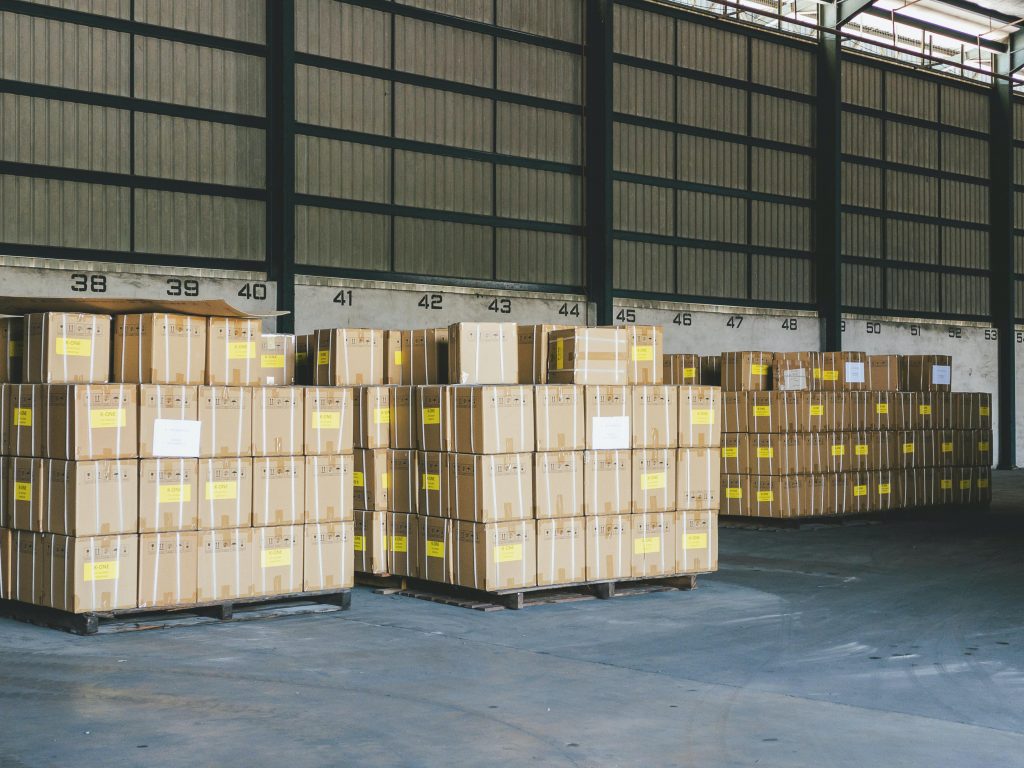
Choosing the right storage facility requires careful thought about location, size, security, and amenities. These factors can significantly affect convenience and the safety of your belongings.
Location and Accessibility
Location plays a crucial role in how practical your storage experience will be. A facility close to your home or business reduces travel time and makes retrieving items much easier. In Michigan's Upper Peninsula, where winters can be harsh, access to a facility on a well-maintained road is an added advantage.
For Business Storage: Facilities near major highways help businesses save time and fuel costs when transporting inventory or tools. Storage units with drive-up access are ideal for quick loading and unloading.
For Homeowners: Proximity is key if you plan to access your seasonal or household items frequently.
"Though warehouses are often quite open and may seem easier to access, you may have difficulty finding the items you need due to the sheer size of the place. Therefore, it is a good idea to consider storage units instead," recommends Storage Rentals of America.
Unit Size and Features
Units come in various sizes, from compact spaces for personal items to large warehouse-style units. Selecting the right size depends on your storage needs.
Small Units (5x5 to 10x10): Great for boxes, documents, and small furniture.
Large Units (10x20 and up): Suitable for storing vehicles, large equipment, or household goods during a move.
Climate-Controlled Units: Ideal for sensitive items like wooden furniture, electronics, and important documents.
Additionally, some facilities offer storage units with electricity or attached office space, which is perfect for small business owners needing both storage and workspace.
Security and Facility Reputation
Security is essential when selecting a storage facility. Look for features like gated access, 24/7 surveillance cameras, and individual unit alarms.
On-Site Staff: Facilities with on-site managers or security personnel offer an extra layer of protection.
Reputation and Reviews: Check customer reviews for feedback on cleanliness, customer service, and overall safety standards.
Strategic Packing and Organizational Techniques
Best Practices for Maximizing Space in Storage Units
Packing a storage unit efficiently makes a significant difference in making the best of available space and ensuring easy access to stored items. An organized approach eliminates wasted space and reduces the risk of damaged goods.
- Use Uniformly Sized Boxes: Standard box sizes make stacking easier, creating a stable and space-efficient layout.
- Stack from Heaviest to Lightest: Place heavier boxes at the bottom to prevent crushing delicate items and maintain balance.
- Utilize Shelving Units: Adding freestanding shelves allows vertical storage without stacking boxes too high, improving accessibility.
- Break Down Large Items: Dismantling furniture—such as bed frames or tables—frees up space, making the most of available square footage.
- Leave a Pathway: A narrow aisle ensures access to items in the back without having to unload the entire unit.
Smart planning prevents clutter and makes retrieval effortless. Consider keeping an inventory list to know exactly what's inside the unit at all times.
As an alternative to packing yourself, many moving and storage companies also provide packing services. "From bubble wrap and boxes to packing tape and foam cushioning, your packers will bring the very best moving supplies and equipment to ensure all of your belongings are properly protected and boxed up securely," says Moving.com.
Tips for Protecting and Organizing Belongings During Storage
Proper storage techniques extend the longevity of items by preventing damage from moisture, dust, and shifting weight.
- Use Plastic Bins for Long-Term Storage: Unlike cardboard boxes, plastic bins resist moisture and pests, offering better protection.
- Wrap Fragile Items Securely: Bubble wrap, padding, and furniture covers safeguard delicate possessions from breakage or scratches.
- Label Everything Clearly: Marking all boxes with their contents and a designated area number simplifies retrieval.
- Store Essential Items Near the Front: Frequently needed belongings should be placed where they are easy to grab.
- Avoid Overpacking Boxes: Overfilled boxes can collapse underweight, causing an unstable stack and potential damage.
Layering protective materials between stacked items and keeping items off the floor with pallets or boards adds another layer of security. A well-organized unit saves time, prevents frustration, and keeps belongings in top condition whenever they are needed.
Safety and Security in Upper Peninsula Storage Solutions
Latest Security Measures in Warehouses and Mini Storage Units
Storage facilities in Michigan's Upper Peninsula incorporate multiple security layers to prevent unauthorized access and protect stored goods. Surveillance systems equipped with high-definition cameras monitor entry points and storage areas 24/7, deterring potential intrusions. Many facilities use motion-detection alarms that activate when movement occurs outside designated hours.
Access control systems add another layer of security. "These systems aim to ensure that only authorized personnel can access the facility. In context, this often involves using a keypad or access credential to open a gate or door," explains Pavion. Individual unit alarms provide additional safeguards, alerting staff if unauthorized access occurs. Bright LED lighting across the property reduces blind spots and enhances visibility during nighttime visits.
Security also depends on structural integrity. Steel roll-up doors with reinforced locks protect units from tampering. Perimeter fencing with controlled entry gates ensures unauthorized vehicles cannot enter. Some businesses employ on-site personnel who monitor activity and conduct routine security checks.
How to Ensure Your Items Are Secure in Storage Facilities
Choosing a secure storage facility starts with evaluating its security features. Ask whether the facility has round-the-clock surveillance, controlled access, and individual unit locks. Facilities offering cylinder locks or disc locks provide higher resistance against forced entry.
- Use a high-quality lock. Disc or cylinder locks offer better protection than standard padlocks.
- Store valuable items in tamper-proof containers. Heavy-duty bins with locking mechanisms reduce the risk of theft.
- Maintain an inventory list. A detailed record helps track stored belongings and assess potential losses in case of an incident.
- Be mindful of who has access. If using shared access, ensure only trusted individuals can enter your unit.
- Choose a facility with climate control if storing sensitive materials. Temperature fluctuations can cause deterioration, making controlled conditions essential for preservation.
Insurance provides an extra level of protection. Many storage facilities offer tenant insurance options, while homeowner's or renter's insurance may cover stored goods. Reviewing coverage details ensures adequate protection against theft, fire, or other potential risks.
Security doesn't stop at the facility's provisions. Being proactive with storage strategies—such as using hard-to-identify boxes for high-value items or positioning lesser-used goods in front—adds another safeguard. With the right precautions, stored items remain protected from theft, damage, and environmental risks.
Climate Control: Protecting Your Valuables
Harsh winters and humid summers in Michigan's Upper Peninsula can wreak havoc on stored belongings. Extreme temperature fluctuations cause materials to contract and expand, while high humidity invites mold and mildew. A climate-controlled storage unit provides a stable environment, preventing damage that ordinary storage facilities can't avoid.
Benefits of Climate-Controlled Storage for Sensitive Items
Some materials degrade quickly when exposed to temperature shifts and moisture. "Extreme heat can warp furniture. Excess moisture can damage paperwork, photos, and other important, sensitive items that you might want access to at some point," explains Move.org. Wood furniture cracks, paper documents deteriorate, and electronics suffer from internal corrosion. A climate-controlled unit keeps temperature and humidity at optimal levels, ensuring that delicate possessions remain in top condition.
- Prevents Mold and Mildew: Humidity control keeps organic materials like fabrics and paper from developing harmful growths.
- Reduces Warping and Cracking: Wooden furniture, instruments, and artwork stay structurally sound without expanding or contracting.
- Protects Electronics and Metals: A stable, dry environment prevents rust, corrosion, and internal damage.
- Preserves Documents and Photographs: Paper-based items retain their integrity without yellowing or becoming brittle.
Identifying Items That Require Climate Control
Not Everything in storage needs climate regulation, but certain items degrade quickly without it. "Items that benefit from climate-controlled storage include antiques, paper objects, fabrics, plastics, cosmetics and medical supplies," states U.S. News.
- Furniture: Wooden and leather pieces are vulnerable to cracking, mold, and warping.
- Electronics: Devices like computers, televisions, and audio equipment suffer from condensation buildup when exposed to fluctuating temperatures.
- Artwork & Collectibles: Paintings, photographs, vinyl records, and antiques remain in their original condition under controlled humidity levels.
- Business Documents: Legal papers, books, and records avoid discoloration and fragility.
- Musical Instruments: Guitars, pianos, and string instruments maintain their tuning and structure without swelling or cracking.
- Wine & Perishables: Fine wines and certain organic materials require steady temperatures to prevent spoilage or degradation.
Protecting stored belongings from unpredictable Michigan weather starts with choosing the right space. A climate-controlled unit eliminates temperature extremes, providing peace of mind for long-term storage. When delicate or valuable items are involved, stable conditions make all the difference.
Insurance for Stored Items
Why Insurance Matters for Stored Belongings
Damage, theft, and unforeseen disasters can happen even in well-maintained storage facilities. Insurance provides financial protection against these risks, ensuring stored items can be repaired or replaced if something goes wrong. Homeowners and renters insurance policies may offer partial coverage, but "if the total value of what you're storing exceeds your renters insurance policy's personal property coverage limits or sub-limits, a separate insurance policy from a storage insurer can provide additional coverage," claims Progressive.
Understanding Storage Insurance Policy Options
Coverage varies between policies, so reviewing the details before choosing one matters. Some storage facilities partner with insurance providers to offer built-in coverage, while others require renters to secure their own policy. Common policy options include:
- Basic coverage: Protects against theft, fire, and certain natural disasters.
- Comprehensive storage insurance: Includes coverage for mold, water damage, and pest infestations.
- Replacement cost vs. actual cash value: Replacement cost policies pay for a new item of similar value, while actual cash value policies consider depreciation.
High-value items like antiques, electronics, or collectibles may require additional riders or endorsements. Checking the policy's exclusions helps identify any gaps in coverage.
How to File a Claim for Stored Items
If an insured item gets damaged or stolen, the claims process typically follows these steps:
- Document the Loss: Take photos or videos of damaged items. Keep receipts or appraisals for high-value belongings.
- Report the Incident: For theft or vandalism, filing a police report may be necessary.
- Notify the Insurance Provider: Submit the claim along with supporting documentation.
- Assessment and Settlement: The insurance company evaluates the claim and determines compensation.
Processing times vary depending on the complexity of the claim and the insurer's response time. Keeping an up-to-date inventory of stored items can speed up the process.
Accessibility and Convenience Features
Driving up, unloading quickly, and accessing items whenever needed—these factors can make all the difference when choosing a storage unit. A facility's accessibility features determine how efficiently renters can use their space, whether for business inventory, seasonal equipment, or personal belongings.
Round-the-Clock Access: When You Need It, It's There
Life doesn't always operate on a nine-to-five schedule. Many storage facilities offer 24/7 access, allowing renters to retrieve or store items at any hour. This feature becomes especially valuable for businesses managing stock overflow or individuals with unpredictable schedules.
Drive-Up Units: Convenience at Its Best
Hauling heavy furniture or loading inventory onto a dolly doesn't have to be a hassle. Drive-up storage units remove extra steps. Simply pull up, unload, and drive away. These units work well for:
- Contractors who need daily access to tools and materials
- Retail businesses managing seasonal inventory
- Families storing bulky outdoor equipment like snowmobiles and ATVs
With no hallways or elevators to navigate, drive-up units save time and effort, making them one of the most sought-after storage options.
Delivery Accommodations: Hassle-Free Storage Management
Some warehouses and mini self storage facilities accept deliveries on behalf of renters. This feature benefits businesses that ship inventory directly to their storage units, cutting down on transport time from a different location. Having direct shipment access simplifies logistics, whether for e-commerce fulfillment, construction materials, or archived documents.
How Accessibility Features Influence Facility Choice
Accessibility matters when choosing the right storage facility. Those who frequently access their units value features like extended hours and easy entry, while others may prioritize climate control or security. Consider how often a unit will be used and what ease-of-use features align with that need.
For frequent visitors, wide aisles, drive-up access, and flexible hours make a significant difference in convenience. Businesses and individuals needing minimal access may focus on cost-saving options instead. Each feature adds a layer of efficiency, turning storage into a seamless extension of home or workplace operations.
Cost Considerations: The Cost of Renting Storage Units in the Upper Peninsula
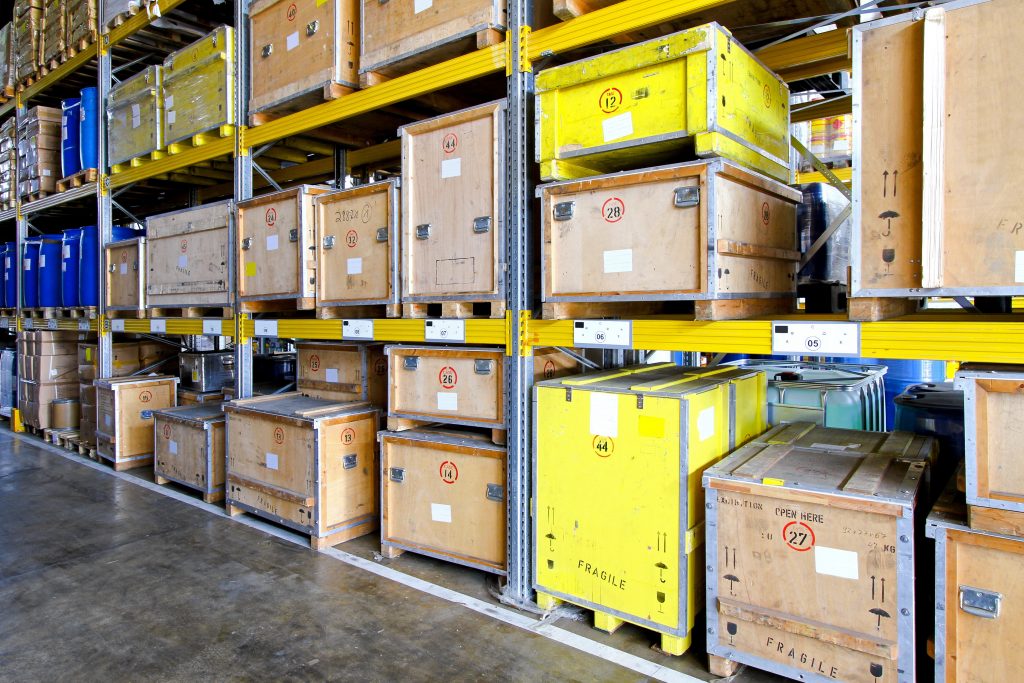
Average Cost and Factors Affecting the Price
"Several factors affect storage unit prices. Your average monthly cost for a storage solution will go up or down depending on your storage unit size, type, and availability," says Move.org.
The most significant price factors include the following:
- Unit size: Smaller units (5x5 or 5x10 feet) cost considerably less than large units (10x20 or 10x30 feet).
- Location: Urban areas or facilities near high-traffic hubs tend to charge more than remote or less frequented locations.
- Amenities: Climate control, 24/7 access, and added security features increase rental rates.
- Rental duration: Long-term leases sometimes offer discounts compared to month-to-month agreements.
- Seasonal demand: Rates may rise in peak moving seasons, typically summer months.
Understanding the Value of Location and Unit Size
Choosing the right storage unit involves balancing size needs with overall cost. A well-located facility saves time and fuel costs, especially for frequent access. On the other hand, selecting a unit that exactly fits storage needs prevents overpaying for unused space.
For example, a furniture storage situation requires a unit at least 10x10 feet in size, while small business inventory storage might demand a 10x20-foot or larger warehouse-style unit. If access is a priority, closer urban facilities cost more but enhance convenience. Conversely, a more distant location offers budget-friendly alternatives with fewer frills.
Cost-Benefit Analysis: Short-Term vs. Long-Term Rentals
Short-term storage suits temporary needs, such as during a move or renovation. The flexibility of month-to-month contracts works well, though monthly rates without long-term commitments are often higher. Long-term rentals, however, provide cost efficiency through discounted plans, lower per-month expenses, and potential perks like waived setup fees.
For businesses storing inventory year-round, long-term leases make more financial sense—some providers offer price locks or tiered discounts for extended commitments. On the other hand, if storage needs fluctuate, short-term rentals maintain flexibility without long-term obligations. Evaluating intended use and budget helps determine the most practical financial approach.








